Zhang Jia Jie, the real Pandora
Tuesday, June 22nd, 2010 in: News, Travel
httpvh://www.youtube.com/watch?v=EeF6By3JQQs
Before I came to China, Ben sent us all en e-mail labeled “Zhang Jia Jie, the real Pandora.” It including some breathtaking photos of a landscape the likes of which I’d never seen before. “Is that where we’re going?” grandpa asked. “If you want.” It was a simpler answer than I expected, but I wasn’t yet familiar with the way grandpa travels.
Fast Forward a couple weeks, and we’re waiting in front of our hotel in the city waiting for our guide. Expecting a grizzled, barrel-chested mountain man, up walks a girl younger than my brother in capri pants with what looks like a press badge around her neck. “Here’s our guide,” Ben announces as I pick my broken expectations off the ground and we pile into the van. The city of Zhang Jia Jie lies between two amazing geological features, the valley known as Zhang Jia Jie, and Tian Men Shan, heaven’s gate mountain. The latter has a large gash in it we saw from the car as we drove into the city. “There used to be Russian stunt pilots who flew his plane through the hole in the mountain,” Ben translated for our driver. “Used to? Why not anymore?” “I’m sure they retired peacefully…”
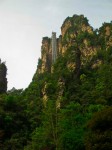 Back in the van, we passed a car that had cut a turn too close and was half-overturned on the shoulder. Our driver laughed at their incompetence as he barreled down the winding road hugging the base of the majestic cliffs towering overhead. At the entrance to the protected area, it felt like we were going to a theme park. Long queues and tour buses lined up waiting to take patrons to the main areas. We approached the base of an enormous cliff with a metal scar running up its side. When we got out of the bus I realized that it was a huge elevator that had been built by a cooperative of Chinese and Korean tourist companies. A minute is all it took to climb the cliff and arrive at the top, which was surprisingly flat and spacious. A sea of orange hats being led around by a waving flag marked the tour groups, and I glanced over at Grandpa’ orange Bourbon Whiskey cap and we shared a laugh that it probably wasn’t the best wardrobe decision to stand out in a crowd.
Back in the van, we passed a car that had cut a turn too close and was half-overturned on the shoulder. Our driver laughed at their incompetence as he barreled down the winding road hugging the base of the majestic cliffs towering overhead. At the entrance to the protected area, it felt like we were going to a theme park. Long queues and tour buses lined up waiting to take patrons to the main areas. We approached the base of an enormous cliff with a metal scar running up its side. When we got out of the bus I realized that it was a huge elevator that had been built by a cooperative of Chinese and Korean tourist companies. A minute is all it took to climb the cliff and arrive at the top, which was surprisingly flat and spacious. A sea of orange hats being led around by a waving flag marked the tour groups, and I glanced over at Grandpa’ orange Bourbon Whiskey cap and we shared a laugh that it probably wasn’t the best wardrobe decision to stand out in a crowd.
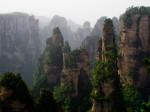 A few observation decks around the elevator gave us our first glimpse of the valley from several thousand feet above ground level. The valley floor and the uppermost peaks were remarkably level, giving the impression that we were either looking down on a very flat canyon floor or standing on a very tall mesa. Of course the valley floor was filled with interesting rock formations that disguised the ground’s levelness. Ben ushered us towards another bus stop with the promise of better views down the road. The queue was overflowing with people, making for a far less orderly wait. I think it was partially on purpose, as the line was surrounded by kiosks selling roasted chestnuts and souvenirs. Why everyone was selling chestnuts remains a mystery, but Jim gave in and bought a bag, unveiling the lucrative reason why we were forced to wait so long for the bus here. We never found out the reason for the lack of variety of foods available, however…
A few observation decks around the elevator gave us our first glimpse of the valley from several thousand feet above ground level. The valley floor and the uppermost peaks were remarkably level, giving the impression that we were either looking down on a very flat canyon floor or standing on a very tall mesa. Of course the valley floor was filled with interesting rock formations that disguised the ground’s levelness. Ben ushered us towards another bus stop with the promise of better views down the road. The queue was overflowing with people, making for a far less orderly wait. I think it was partially on purpose, as the line was surrounded by kiosks selling roasted chestnuts and souvenirs. Why everyone was selling chestnuts remains a mystery, but Jim gave in and bought a bag, unveiling the lucrative reason why we were forced to wait so long for the bus here. We never found out the reason for the lack of variety of foods available, however…
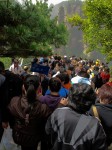 The rest of the park indeed supplied us with even more spectacular views. It’s no wonder China’s landscape is the subject of so much art and poetry. It felt like such a dream to overlook such an inspiring landscape, I kept my camera handy so I could take home some of the views with me. On several occasions, groups of young guys and girls approached me to ask for a photo, throwing their arms around me, then running away giggling. I’ve been slowly getting used to this treatment; foreigners are still rare sights in the areas we’ve been traveling, so we’re still the objects of curiosity. Nevertheless, I can’t help but wonder what becomes of these photos. Do people look through them with friends and say “oh, this is that random white guy we ran into on the mountain. Nice!”
The rest of the park indeed supplied us with even more spectacular views. It’s no wonder China’s landscape is the subject of so much art and poetry. It felt like such a dream to overlook such an inspiring landscape, I kept my camera handy so I could take home some of the views with me. On several occasions, groups of young guys and girls approached me to ask for a photo, throwing their arms around me, then running away giggling. I’ve been slowly getting used to this treatment; foreigners are still rare sights in the areas we’ve been traveling, so we’re still the objects of curiosity. Nevertheless, I can’t help but wonder what becomes of these photos. Do people look through them with friends and say “oh, this is that random white guy we ran into on the mountain. Nice!”
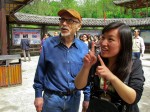 With the aid of the elevator and buses, Grandpa was able to go almost everywhere, but he was still aware of his limits, opting to avoid areas with too many stairs. “If you go down you’ll have to come back up! I’ll just take a rest here, bring back photos.” I was happy to oblige, and I tried to explore every available path on the trail. Our guide stuck close to Ben, the only person in our group with whom she shared a language; they spoke at length and Ben would filter the interesting tidbits to us.
With the aid of the elevator and buses, Grandpa was able to go almost everywhere, but he was still aware of his limits, opting to avoid areas with too many stairs. “If you go down you’ll have to come back up! I’ll just take a rest here, bring back photos.” I was happy to oblige, and I tried to explore every available path on the trail. Our guide stuck close to Ben, the only person in our group with whom she shared a language; they spoke at length and Ben would filter the interesting tidbits to us.
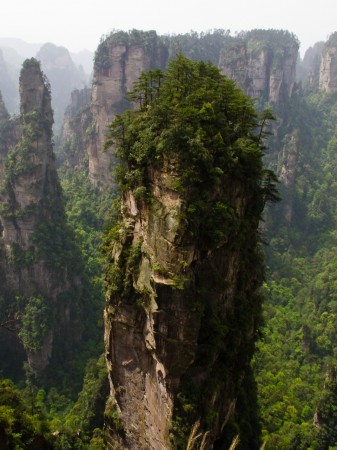 Towards the end of the walking path there was an observation deck with a large crowd taking a photo of a particular rock. Apparently, this tower was the inspiration for James Cameron’s Pandora world in Avatar. Side by side photos of the monolith with stills from the movie showed their obvious similarities. It was unclear whether Cameron came here looking for inspiration or if he was just here on vacation and happened upon this place, but standing at the edge of a thousand foot cliff looking at these giant pillars, wider at the top than the base, I felt like I was looking at an alien planet. With such a view, inspiration was not hard to find. Later on I heard that they actually renamed this formation from Southern Sky Column to “Avatar Hallelujah Mountain,” to draw more tourism to the place. It’s funny how the brand power of a single blockbuster film is enough to fuel the economy of some place. Just look at what “The Goonies” did for Astoria, Oregon.
Towards the end of the walking path there was an observation deck with a large crowd taking a photo of a particular rock. Apparently, this tower was the inspiration for James Cameron’s Pandora world in Avatar. Side by side photos of the monolith with stills from the movie showed their obvious similarities. It was unclear whether Cameron came here looking for inspiration or if he was just here on vacation and happened upon this place, but standing at the edge of a thousand foot cliff looking at these giant pillars, wider at the top than the base, I felt like I was looking at an alien planet. With such a view, inspiration was not hard to find. Later on I heard that they actually renamed this formation from Southern Sky Column to “Avatar Hallelujah Mountain,” to draw more tourism to the place. It’s funny how the brand power of a single blockbuster film is enough to fuel the economy of some place. Just look at what “The Goonies” did for Astoria, Oregon.
Ok, bad example.

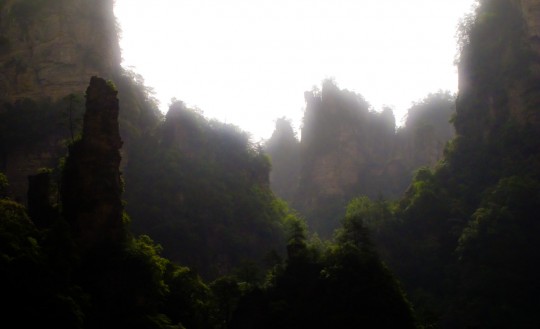

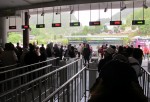

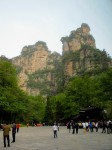
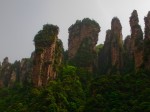
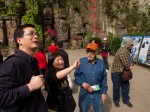

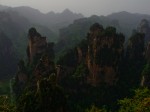
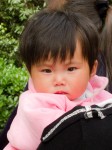
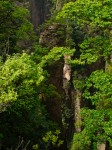
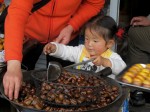
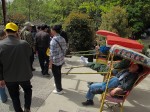
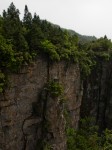

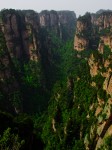
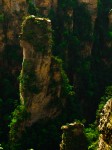
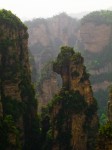
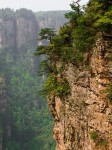
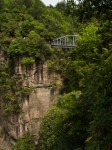
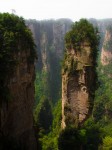
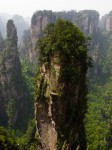
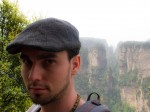
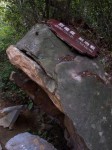
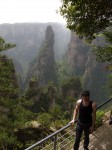
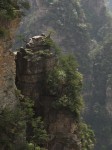
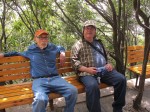
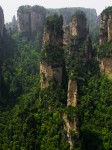
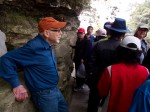
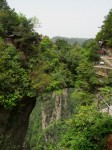

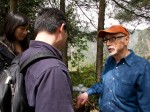
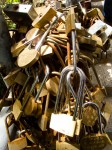
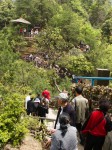
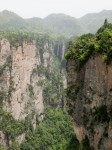


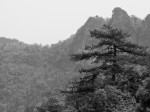
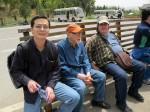
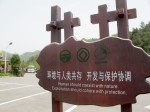

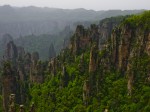
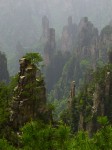
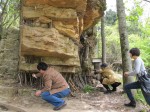
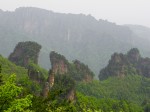
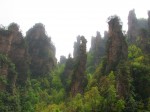
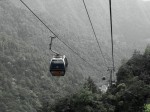
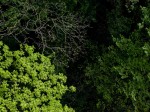
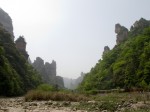
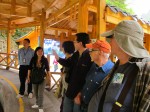
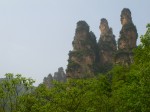
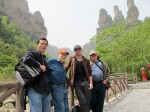
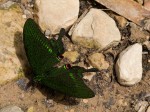
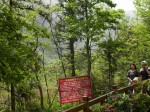

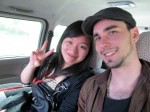








I’d like to check this place out. I find it disconcerting that it’s been…commercialized, I guess.